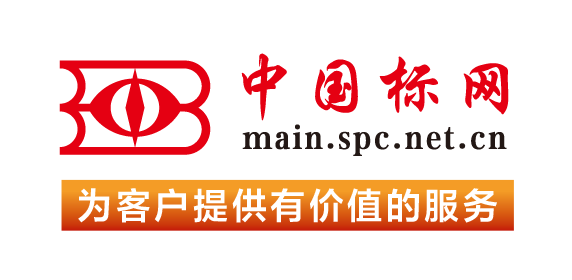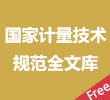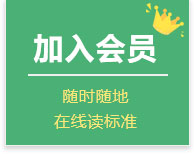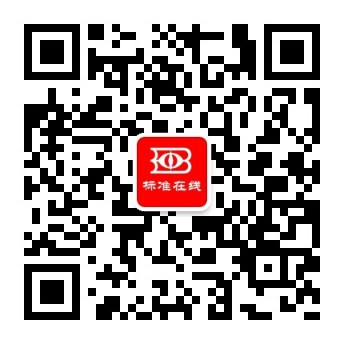5.1 Gloss3 is associated with the capacity of a surface to reflect more light in some directions than in others. The directions associated with mirror (or specular) reflection normally have the highest reflectances. Gloss is best seen and analyzed when the surfaces studied are illuminated by a light source that provides strong contrasting patterns of light and dark. Such a light source is described in this test method.5.2 The simplest concept of gloss is that it corresponds to the mirror-like reflectances of surfaces. However, the distributions and intensities of this surface-reflected light are (for real materials) highly variable and affected by a variety of factors: surface smoothness and contour, refractive index, absorptance, angle of incidence, and (to a generally small extent) wavelength. From the great variety of surface-reflection patterns met in materials of commerce, it has been possible to identify seven surface-reflection criteria or “types of gloss” regularly used by skilled technologists for intercomparing and rating their products for gloss. Six of the seven criteria, or “types of gloss,” are identified in the section on definitions. The seventh, luster or contrast gloss, is seldom of concern to the coatings industry.1.1 This test method covers the visual evaluation of gloss differences of coating surfaces, using special types of lamps for illumination. It identifies six aspects or types of gloss that one may look for when using the lamp to assess gloss differences between surfaces. It describes the conditions for using the lamps to best identify small differences in each of the six types of gloss. Four levels of visual gloss differences are distinguished.1.2 While this technique is useful for both weathered and unweathered specimens, it has not been applied to metallics.1.3 The values stated in inch-pound units are to be regarded as standard. The values given in parentheses are mathematical conversions to SI units that are provided for information only and are not considered standard.1.4 This standard does not purport to address all of the safety concerns, if any, associated with its use. It is the responsibility of whoever uses this standard to consult and establish appropriate safety, health, and environmental practices and determine the applicability of regulatory limitations prior to use.1.5 This international standard was developed in accordance with internationally recognized principles on standardization established in the Decision on Principles for the Development of International Standards, Guides and Recommendations issued by the World Trade Organization Technical Barriers to Trade (TBT) Committee.
定价: 590元 / 折扣价: 502 元 加购物车
The pH values of the extracts give an indication of the acidity or alkalinity of the fiber and its water-soluble impurities. These values are useful in indicating previous processing and in anticipating subsequent performance. For particular purposes, the pH of an extract prepared by one method may be a more informative index than another and as a consequence four optional extraction procedures are included. This test method is not recommended for acceptance testing because the between-laboratory precision is relatively poor. In some cases, the purchaser and the seller may have to test a commercial shipment of one or more specific materials by the best available method, even though the method has not been recommended for acceptance testing of commercial shipments. In such a case, if there is disagreement arising from differences in values reported by the purchaser and the seller when using this method for acceptance testing, the statistical bias, if any, between the laboratory of the purchaser and the laboratory of the seller should be determined, with each comparison being based on testing specimens randomly drawn from one sample of material of the type being evaluated.1.1 This test method covers the determination of the pH of aqueous extracts from wool and similar animal fibers. It is applicable to fibers in any conditionraw wool, scoured wool, sliver, top, yarn, or fabric. 1.2 This standard does not purport to address all of the safety concerns, if any, associated with its use. It is the responsibility of the user of this standard to establish appropriate safety and health practices and determine the applicability of regulatory limitations prior to use. For specific precautionary statements, see Section 11.
5.1 This guide is intended to assist field personnel in obtaining samples from drums and similar containers for field and laboratory analysis. The need for accurate data, and the costs associated with sampling and analysis, make it essential that samples be taken correctly before submitting them for chemical analysis or physical testing, or both. Incorrect sampling can invalidate resulting data.5.2 This guide may be used by personnel who have no formal workplan. It draws their attention to issues that must be addressed before, during, and after taking a sample. It provides guidance in choosing the sampling technique and equipment suitable for specific situations. It can serve as a training tool for those who are unfamiliar with sampling. It is recommended that this guide be used as a supplement to a written workplan.5.3 Some sections of this guide contain flow charts (see Figs. 1-5) that must be worked through, starting from the top of each page. By answering the questions in the diamond-shaped boxes, and following the appropriate arrows, the person planning to sample will be guided toward the most suitable procedures and equipment. The numbers at the bottom of some boxes refer to corresponding paragraphs in the text, which provide information to help the person sampling answer the questions.FIG. 8 COLIWASAFIG. 9 Concentric Tube ThiefFIG. 10 DipperFIG. 11 Drum ThiefFIG. 12 Peristaltic PumpsFIG. 13 Scoop, Spoon, TrowelFIG. 14 Syringe SamplerFIG. 15 Trier1.1 This guide covers information, including flow charts, for field personnel to follow in order to collect samples from drums and similar containers.1.2 The purpose of this guide is to help field personnel in planning and obtaining samples from drums and similar containers, using equipment and techniques that will ensure that the objectives of the sampling activity will be met. It can also be used as a training tool.1.3 This standard does not purport to address all of the safety concerns, if any, associated with its use. It is the responsibility of the user of this standard to establish appropriate safety, health, and environmental practices and determine the applicability of regulatory limitations prior to use. See specific warnings in 7.4.3 and 7.4.4.1.4 This international standard was developed in accordance with internationally recognized principles on standardization established in the Decision on Principles for the Development of International Standards, Guides and Recommendations issued by the World Trade Organization Technical Barriers to Trade (TBT) Committee.
定价: 646元 / 折扣价: 550 元 加购物车
This specification covers high magnesium marine application aluminum-alloy in those alloy tempers for flat sheet, coiled sheet, and plate, in the mill finish that are intended for marine and similar environments. An inspection lot shall consist of an identifiable quantity of material of the same mill form, alloy, temper, cast or melt lot, and thickness, subjected to inspection at one time. The material shall be supplied in the mill finish and shall be uniform as defined by the requirements of this specification and shall be commercially sound. Each coil, sheet and plate shall be examined to determine conformance to this specification with respect to general quality and identification marking. One sample shall be taken from each end of each parent coil, or parent plate. Alloy-tempers are manufactured and corrosion tested for intended use in marine hull construction or in marine applications where frequent or constant direct contact with seawater is expected. The specimen shall be capable of exhibiting resistance to intergranular corrosion as indicated by an acceptable mass-loss when tested and shall also be capable of exhibiting no evidence of exfoliation or corrosion. Under metallographic examination, the microstructure of a sample from each production lot shall be compared to that of the producer-established reference photomicrograph of acceptable material, in the same thickness range. Each shipping container shall be marked with the purchase order number, material size, specification number, alloy and temper, gross and net weights, and the producer's name or trademark.1.1 This specification covers high magnesium aluminum-alloy products in the mill finish condition that are intended for marine hull construction and other marine applications where frequent or constant direct contact with seawater is expected and for similar environments (Note 1). Aluminum alloy products covered by this specification include the alloy-tempers of flat sheet, coiled sheet, and plate shown in Table 2 [Table 3] and Table 4 [Table 5], and alloy-tempers of extruded profiles shown in Table 6 [Table 7].NOTE 1: There are other aluminum alloy-temper products that may be suitable for use in marine and similar environments, but which may not require the corrosion resistance testing specified by B928/B928M. See Specification B209/B209M for other aluminum sheet and plate alloy-temper products. For other aluminum extruded alloy-temper products see Specification B221 or B221M and/or other relevant specifications for aluminum extruded products.1.2 Alloy and temper designations are in accordance with ANSI H35.1/H35.1 (M). The equivalent Unified Numbering System alloy designations are those of Table 1 preceded by A9, for example, A95083 for 5083 in accordance with Practice E527.1.3 The values stated in either SI units (Table 3 and Table 5) or inch-pound units (Table 2 and Table 4) are to be regarded separately as standard. The values stated in each system may not be exact equivalents; therefore, each system shall be used independently of each other. Combining values from the two systems may result in non-conformance with the standard.1.4 For acceptance criteria for inclusion of new aluminum and aluminum alloys in this specification, see Annex A2.1.5 This standard does not purport to address all of the safety concerns, if any, associated with its use. It is the responsibility of the user of this standard to establish appropriate safety, health, and environmental practices and determine the applicability of regulatory limitations prior to use.1.6 This international standard was developed in accordance with internationally recognized principles on standardization established in the Decision on Principles for the Development of International Standards, Guides and Recommendations issued by the World Trade Organization Technical Barriers to Trade (TBT) Committee.
定价: 646元 / 折扣价: 550 元 加购物车
 购物车
购物车 400-168-0010
400-168-0010











 对不起,暂未有“similar”相关搜索结果!
对不起,暂未有“similar”相关搜索结果!













